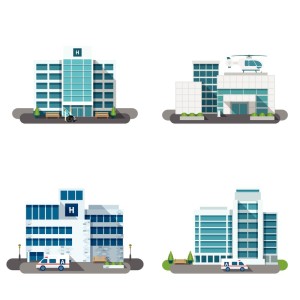We have watched with sadness as Hurricane Harvey has flooded first southeast Texas and now Louisiana. We have seen the spirit of the American people at its best. Volunteers from around the country have brought their own boats to rescue residents while thousands have donated money and supplies. As of Thursday morning, there had been over 25,000 water rescues.
have brought their own boats to rescue residents while thousands have donated money and supplies. As of Thursday morning, there had been over 25,000 water rescues.
Hospitals are meant to operate and care for patients 24/7 through a disaster. But they too were impacted by the rising waters. I took a break mid-day yesterday to watch the news. I saw in that 15-minutes the evacuation of patients from Baptist Hospital in Beaumont, Texas after the city lost its water supply. Without clean water, the hospital had to close and transfer 190 patients.
Patients, many in wheelchairs, needing dialysis treatment were being boarded onto Black Hawk helicopters by teams of doctors and nurses. They were being handed over to military medics to be flown to a hospital in Jasper, Texas – 70 miles away.
The last step in the transfer process was a clinician giving a folded-up paper to the medic. She had stuffed it under her shirt until that point so it didn’t blow away in the wind from the helicopter propellers. We know that this critical paper handoff probably happened over and over this week as patients were transferred to other facilities.
In this age of electronic medical records (EMRs) and health information exchanges (HIEs), we hope that piece of paper is a backup document. Transfers within a health system with a common EMR should be able to rely on the system for access to critical patient information. Health systems that participate in HIEs should be able to rely on some level of data exchange and access between health systems and their disparate EMRs.
I was encouraged to see two health IT articles this week – “As Harvey Devastates Houston, HIE Leaders Move in to Help” in Healthcare Informatics, and “What’s Next for Health Information Exchanges?” in Healthcare IT News. The first article describes the power of the HIE in Texas; portals have been set up in the many shelters so clinicians can access critical health information as they care for people in need of medical attention. The second article talks about the future needs that HIEs could meet and their potential benefits as healthcare continues to evolve.
We know our healthcare organizations depend on IT every day and that even a short unexpected downtime creates problems for clinicians and patients. Think about that situation on steroids and from the patient’s perspective. Any one of the 30,000 plus people currently in shelters could have medical needs. Access to their basic health information is a necessity.
In a medical crisis, clinicians need to know people’s medications, allergies, and medical histories to safely care for patients in shelters and to manage transfers between care settings.
Every healthcare CIO in the country is looking at Texas this week and asking themselves if they are prepared to provide access to critical information if the next Harvey happens to them. CIOs revisit their security plans when they learn of major breaches. CIOs revisit their disaster plans when they hear of data centers being wiped out due to a natural disaster.
Consider this a call to action to revisit your HIE. Are you an active participant in building your HIE? Does your HIE have a sustainable business model? Is all the necessary information being shared? Could it serve the community in a disaster? Healthcare leaders must continue their regional and statewide efforts to ensure robust, sustainable HIEs that can be leveraged in a time of disaster. HIEs must become a foundational component of emergency management.
The CEO of Strategic Health Information Exchange Collaborative (SHIEC), Kelly Hoover Thompson, told Healthcare Informatics that SHIEC exists “to take the greatest minds in HIE across the country, to make it work, and advance it and educate people”. I know many of the people leading HIE’s around the country. They have a passion for what they do. I believe that they, along with IT leaders in provider organizations, will use this disaster to advance HIEs even further. We owe it to our communities to do so.
Related posts:

Jennifer Sporer on said:
Very interesting points–the best time to deal with contingencies is before a disaster happens.
Sue Schade on said:
Jennifer, indeed, disaster preparedness is critical at many levels and takes many forms.